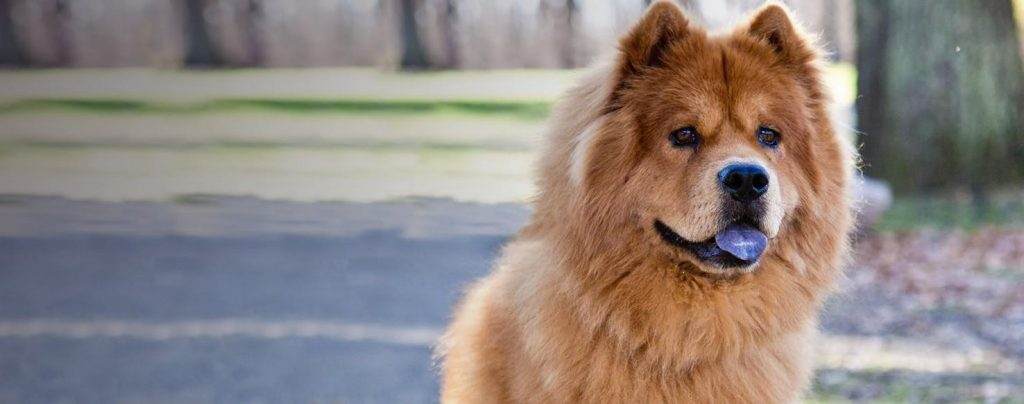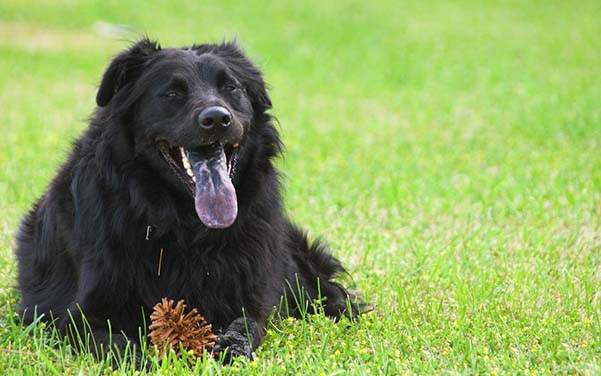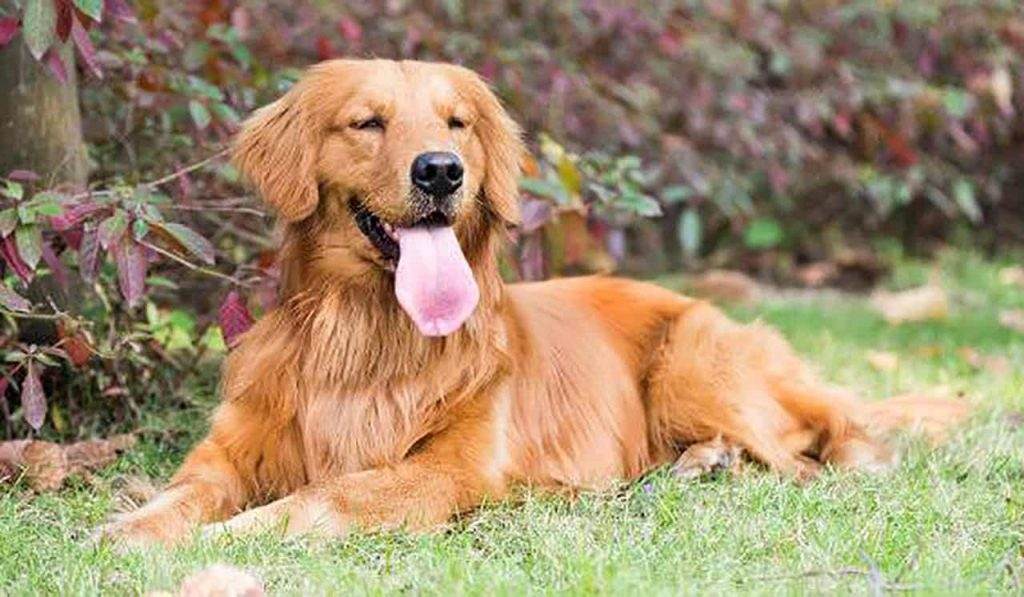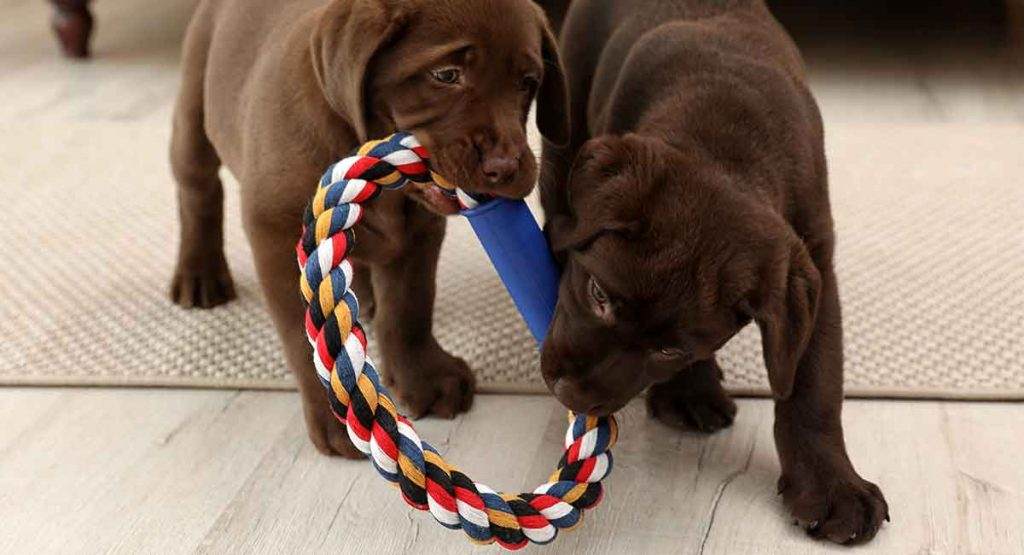The market for crossbred designer dogs is extensively expanding as the demand for crossbred dogs is steadily escalating. The Chabrador is also a product of this drive to fulfill the ever-rising demand for designer dogs. Crossbreeding between a pure breed Labrador and a Chow Chow produces the fluffy, adorable Chabrador.
Called by many other names like Chowbradors, Chab, Chowder, Lab-Chow, and Labrachow -the Chabrador is a unique designer breed. Famous as a designer hybrid produced by the crossbreeding of two purebred parents, this breed of dogs is gaining popularity among dog lovers.
The unique characteristics displayed by these dogs is a result of the mixing of their parental genes. As a large dog- that is both strong and muscular- with a thick coat of luscious fur, the Chabrador is a loveable companion and an excellent watch-dog.
Origin of Chabradors

The Chabrador is a cross between the ancient Chinese guard dog breed Chow Chow and the Labrador Retriever. Like most hybrids, Chabradors inherit the diverse characteristics of their parents.
Gauging the temperament of a Chabrador would require us to understand the traits of its purebred parents. Similarly, a Chabrador may also be a result of multi-generational crossbreeding. This would further diversify its traits.
Understanding the Traits of its Purebred Parents
The Chow Chow is an ancient Chinese dog breed that is well-known for its courage, protective nature and rare blue tongue. This pure breed has existed for thousands of years, serving as guard dogs and hunters. The breed was imported to London in the 18th century and official given the name Chow Chow.
Originally from Canada, the Labrador Retriever breed has also existed for thousands of years as retrieving dogs that accompanied gunmen on hunting expeditions, on both land and water. The Labrador Retriever joined the ‘sporting’ category of the American Kennel Club in 1917, whereas the Chow Chow joined the ‘non-sporting’ category in1903. AKC describes the former as playful, friendly, active and outgoing and the latter as aloof, bright, dignified and serious-minded.
The Chabrador is not enlisted in the AKC as it is a hybrid breed. The Labrador is generally well-known for its friendly, active and loving demeanor. The Chow Chow’s temperament is quite antithetical to that of the Labrador. This mix works to soften the hostile and overtly protective traits of the Chow Chow.
Appearance and Built of a Chabrador

The figure of the dog is truly magnificent and striking. The Chabrador is a large, robust, muscular dog with a dense black or brown coat of fur. The double-layer fur coat is thick to insulate them against cold weather conditions. Some Chabradors have a neck ruff and a curly furry tail.
Deep-set almond eyes give the Chabrador a powerful appearance. The broad head and muzzle of the Chabrador is a distinguishing feature. All Chabradors do not share the same physical characteristics because of the influence of different sets of parental genes.
Some have the coveted Chow Chow blue tongue, while others may have the droopy Labrador ears. Some others might also inherit the erect ‘teddy ears’ of the Chow Chow parent.

The outer layer of their coat consists of hard straight hair, while the lower layer may include medium or shorter hair strands. Feathering on the feet and tail is common among some members of the Chabrador breed. However, as a mixed breed dog, the possibility of predicting a Chabrador’s exact appearance is not entirely possible.
As a medium-sized breed, the Chabrador’s weight is determined by the dominance of either the Labrador gene or the Chow Chow gene. An average Chabrador grows to a height of 18-24 inches and weighs around 50-80 pounds. Male Chabradors tend to be heavier than their female counterparts.
The Temperament of a Chabrador
Affable, loyal and energetic- a Chabrador inherits its personality from its purebred parents. Both parents share certain key characteristics like high energy levels and proactive behavioral traits. Inheriting parental traits, a Chabrador makes an excellent watchdog.
While it is friendly and affectionate with the family, it can be a little standoffish with strangers. Mixing the temperaments of the two parental breeds is always risky as one does not know which of the two sets of traits will be more pronounced in the Chabrador offspring. Usually, you can expect a moderate blend of both these trait sets.
Generally, a Chabrador displays certain unique traits and characteristics that are not merely limited to an imitation of its parents’ features. The crossbred Chabrador is loyal, affectionate and playful.
However, if the influence of the Chow Chow is more pronounced than the Labrador, then the Chabrador maybe more aloof to strangers than friendly like the Labrador. The Chow Chow is well-known for its independent and standoffish character- that may be the dominant trait in the crossbred offspring.
On the other hand, Labradors have a reputation for being loveable and overtly-friendly. Chabradors can be more intimidating and challenging than the lovable Labrador, however, a patterned daily routine can help improve their temperament. Most Chabradors inherit both sets of traits from their parents, but training makes the real difference in the pronouncement of either set of traits.

They are alert and intelligent like the Chow Chow and affectionate and loyal like the Labrador Retriever. They truly reflect the portrait of a well-balanced dog. However, it is equally important to invest time in training them to develop these positive character traits fully- especially as they pass into adolescence and subsequently adulthood.
Chabradors are good playmates for children. However, slight caution has to be maintained in terms of training the children on how to handle dogs for their mutual safety. The Chabrador’s playful character is best suited when actively engaging with kids. Chabradors are more suited to live in comparatively open spaces with backyards for active running.
They also adapt to apartment living- provided a sufficient amount of exercise and outdoor time is given to them. The size of the living space can affect the temperament of your Chabrador. Chabradors make good family pets as well as hiking companions. Some supervision is needed when they are playing with toddlers. Chabradors also adjust well with other pets- if they are socialized as such from an early age.
Health Concerns with a Chabrador
The life expectancy of a Chabrador is 9-12 years. As a crossbred dog, the Chabrador inherits the diverse health issues from both its purebred parents. Genetic diseases – that significantly affect its quality of life as well as life expectancy-are passed onto the Chabrador offspring.
Both the Chow Chow and the Labrador are prone to suffer from Hypothyroidism. This genetically dominant strain of an underactive thyroid gland finds representation in the Chabrador. This disease produces several of painful and often untraceable symptoms like loss of fur, chronic skin infections or struggle to lose weight.
These symptoms start during the dog’s middle age and often go undetected or rather unconnected with the causal problem – hypothyroidism. The upside is that this ailment and its symptoms can be easily treated with medication upon confirmation.

The Chabrador can also suffer from hip and elbow dysplasia. As a large dog, the Chabrador is predisposed to developing hip dysplasia at a young age. At a later stage, the mobility of the dog is drastically reduced due to painful arthritis.
Another common health issue face by Chabradors is bloat or Gastro Dilation Volvulus (GDV) wherein the abdomen of the dog appears bloated and stiff. Constant salivation and distressed pacing are other symptoms of bloat in Chabradors.
Eye diseases like Glaucoma and cataracts are also possible future complications as Chow Chows are predisposed toward these ailments.
Obesity is another significant health issue among Chabradors. Post neutering, Chabradors are extremely prone to obesity. A healthy diet and ample exercise can help prevent obesity.
Apart from these diseases, Chabradors are also susceptible to ear infections, inflammation of the gums and allergies. It is important to check a Chabrador’s ears regularly for redness and bad odor. This is mandatory at least once a week. Use a dog ear cleaner to clean its ears regularly to prevent these painful infections.
It is important to remove tartar from their teeth and gums to prevent periodontal diseases. It is also advisable to trim your dog’s nails regularly to prevent long-term infections and other ailments.
Dietary Regulations of a Chabrador
As a comparatively large dog, Chabradors consume fairly large quantities of dry food. Daily a Chabrador consumes 2-3 cups of food. Dry dog food that is designed for larger dogs, is best suited for Chabradors. Food regulation schedules are necessary as Chabradors also tend to overeat like their purebred Labrador parent.
Specially curated diets work best- keeping in mind the parental propensities of ailments. A mineral and vitamin-rich diet is important for Chabradors as it helps reduce future health complications. Try feeding it dry dog food that contains vegetables as well as meat to improve its health significantly.
Exercise is the Key to a Healthy Chabrador
Exercise -like jogging, long walks or swimming- is important to maintain a Chabrador’s health. Burning excess energy stored in its body is essential as the alternative results in a bored and destructive dog.
Fixing a specific exercise routine can be helpful. At an early age, it is advisable to avoid intensive exercise and settle for long walks. Gradually introduce the exercise routine once your Chabrador is a little older.

Fighting obesity in the Chabrador can only be successful with a definite exercise routine in place. Swimming can be another tool of effective exercise for Chabradors- especially on hot summer days. Inheriting the hunting genes from both its purebred parents, the Chabrador also enjoys hunting games.
This can be effectively developed into an exercise routine- to help mentally and physically stimulate the Chabrador. The playful character of the Labrador is reflected in the Chabrador’s desire to play fetch and run leash-less in the park. This reflects the playful, active and joyous character of the Retriever that enjoys similar activities.
It is imperative to provide mental stimulation for a Chabrador- as without it they tend to become bored and destructive.
Maintaining the Thick Furry Coat

The thick, luscious, double-layered waterproof coat of a Chabrador needs frequent grooming. It needs to be brushed regularly to prevent matting. The fur size also needs to be kept in check. As a seasonal shedder, the Chabrador sheds extensively during the summer months.
The coat has to be brushed every day during the change of seasons. It is always useful to get the Chabrador settled into a bathing routine from its infancy. This helps create a patterned form of behavior, which is easier for the dog to follow. Bathing every once a month or once every eight weeks is ideal for Chabradors.
Grooming the thick coat with a suitable shampoo and conditioner is necessary to maintain its sheen and gloss. Most Chabradors enjoy bathing- so the task of establishing a bathing routine should not be difficult. A healthy coat reflects a healthy dog, thus nutrition is equally significant in this regard. Daily vitamins and a well-planned, routinized diet can favorably impact your dog’s outer and inner well-being.
Trainability Index of a Chabrador
Early lessons in obedience are essential to effectively train Chabradors. The characteristic traits of the Chow Chow parent will become dominant if early socialization is neglected. As puppies, the Chabrador is well-behaved and cooperative.
Without proper, dedicated training these character traits will erode during the years of adolescence. Training must commence at a very young age to indoctrinate a coherent sense of discipline and command following in the Chabrador. Refusal to accept authority can be one of the drawbacks of delayed training programs.
Early socialization – beginning from when the pup is 14-16 months old- is the key to train a Chabrador effectively and easily.

Beginning a regimental training program right from puppyhood is recommended. The independent, stubborn personality of the Chow Chow will become overtly deterministic in the absence of early training programs for the Chabrador.
Reward-based training methods- that incorporate elements of fun- work best for Chabradors as these avoid the possibility of any aggressive and non-compliant behaviors. Punishments do not work well with the process of training Chabradors. They tend to demotivate the dog and hamper efforts at improvement.
Handing out treats, using clickers, rewarding it with a celebratory pat on the back- all reinforce command following and good behavior. These training modalities can be adopted by the Chabrador dog parents to effectively teach command following skills.
Ending the training session on a positive note is essential as some Chabradors can be extremely willful and stubborn. Consistency on the part of the trainer is necessary to effectively train the Chabrador.
Conclusion
It is always best to procure Chabradors from reliable breeders, who toil diligently to produce healthy mix breeds. Adoption- as opposed to buying is always a noble option. To holistically care for your Chabrador, it is important to schedule regular appointments with the vet and stay updated on the vaccination plan. Vitamins are the key to a healthy and happy Chabrador. It is important to approach this task with utmost solemnity. Owning a Chabrador is a task of significant responsibility and it must be treated as such.
Table of Contents





